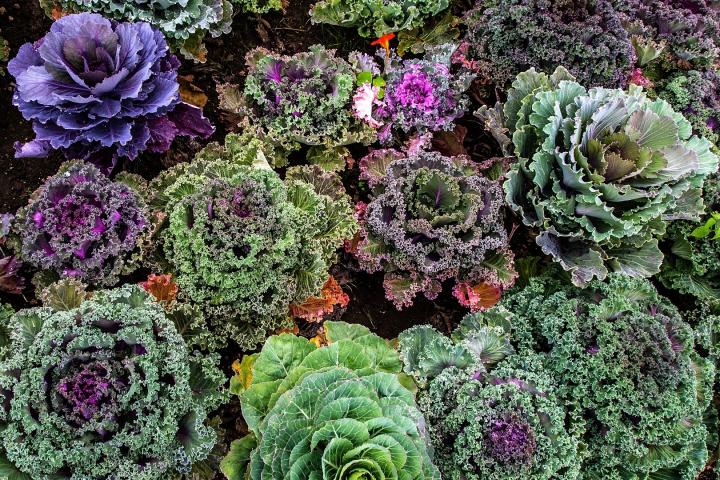
Kale is a member of the Brassicaceae family which includes crops such as Cabbage, Cauliflower, Broccoli, and Radish. It is highly nutritious, with large variety of vitamins (A, B, Folate), minerals(Ca, K, Mg) and phytonutrients. It tastes de-licious and an ideal, all-in-one vegetable to add to your regular diet. It has a lower cost of production compared to other horticultural crop
I. How to Grow
- With hardy leaf vegetable Kale can grow in tough winters. Ask local nursery which varieties are best for your area. Choose semi-shady, moderately sheltered site. Soil pH should be near 6.8.
- Add lime, if needed. Amend soil by mixing in plenty of well-aged compost, manure or a planting mix rich in organic matter.
- Kale likes cooler weather but still grows in warmer climates during cooler months. In cooler areas, sow seeds outdoors in late spring for fall and winter harvesting. In warmer areas, sow seeds outdoors through early fall for late winter and spring harvests.
- Create shallow drills as long as desired, spacing each drill out by about 2.5 feet. Plant seeds half inch deep and 2 feet apart within rows.
- Cover with a thin layer of soil and water regularly. During growth, handpick or hoe out weeds out as they appear. Mulching helps deter weeds and holds in moisture. Harvest young and softer leaves from the center of the plant as needed, not all at once. Larger, tougher leaves are great for cooking.
II. Insect Control
- Kale is generally less susceptible to pests than other crucifers. See Broccoli, Brussels Sprouts and Cauliflower for general pest control. Others include cabbage root maggot¸ cabbage butterfly and club root.
- Cabbage root maggots can be stopped by applying small plastic or foam ground covers that tightly wrap around the base of seedlings.
- Butterfly can be stopped by hand picking caterpillar and rubbing eggs off leaves.
- Club root is an incurable soil disease that can last 10 years. The only way around it is to transplant well-developed, resistant seedlings.
III. Recommended Varieties
- Vates: which is a hardy variety and does not yellow in cold weather. It also has curly, blue-green leaves on 15 inch tall plants.
- Winterbor: which resembles the ‘Vates’ variety, but is frost tolerant.
- Red Russian: which has red, tender leaves and is an early crop.
- Lacinato: (aka ‘Lacinato Blue’, ‘Tuscan’, ‘Black Palm Tree’, or ‘Cavil Nero’): heirloom; straplike leaves up to 2 feet long on plants that resemble small palm trees; heat tolerant, and very cold-hardy.
- True Siberian: large, frilly, blue-green leaves; cold-hardy; pick all winter in some areas.
< Previous
Importance of a marketing plan to an agribusiness
Next >
5 Ways to Streamline Internal Communications at Your Agribusiness
Related Blogs

Agricultural Tips